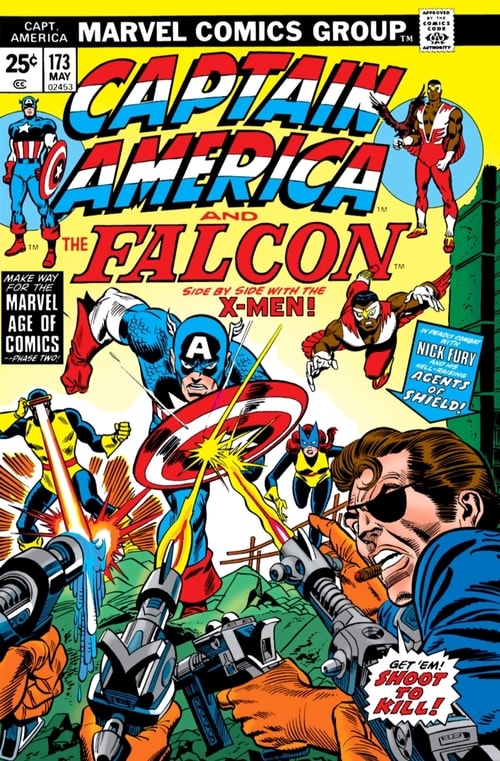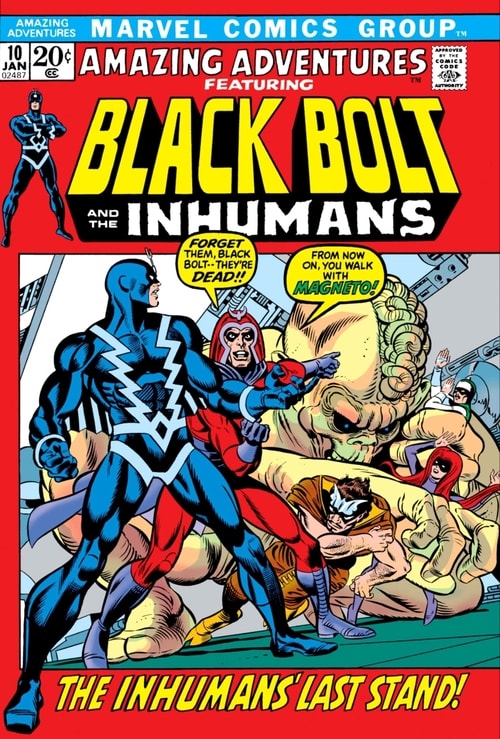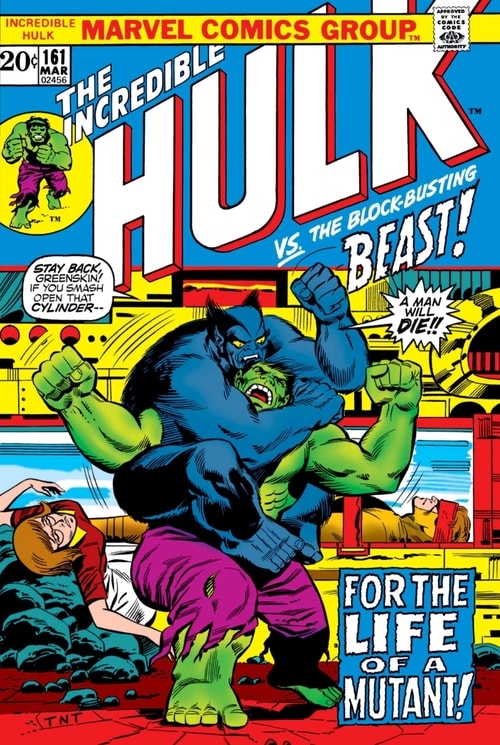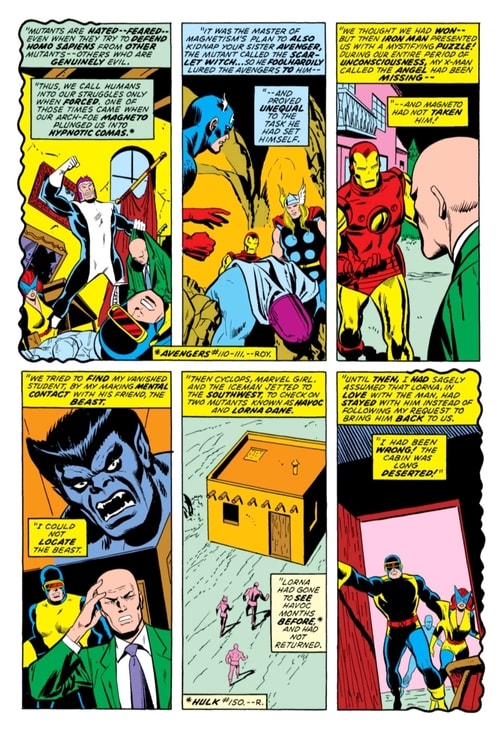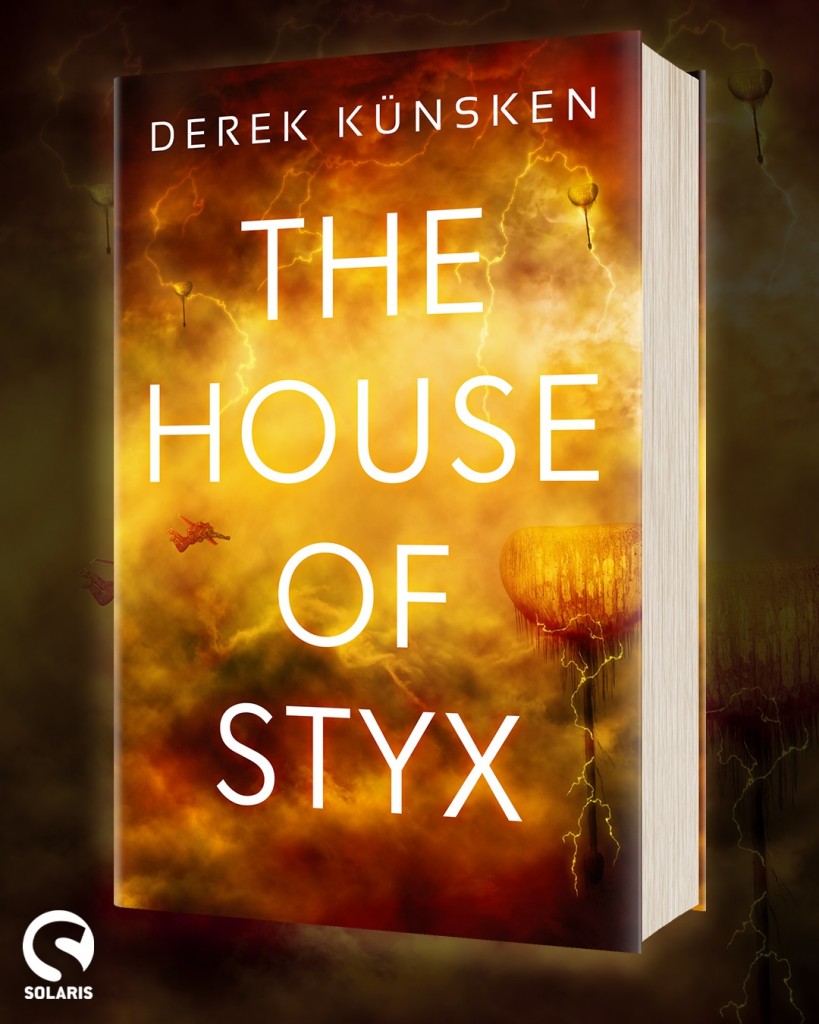Uncanny X-Men, Part 14: 1973 and 1974 – Magneto, the Hulk, Banshee and Post-Watergate Captain America
Welcome to part 14 of my X-Men reread! The X-Men are still in their publishing purgatory that lasted from 1970-1975. During this time, the X-Men series is reprinting middling mid-1960s material. Hank McCoy lasted 6 issues as the star of Amazing Adventures and the Silver Age X-Men seem to have had so little impact on the 1970s working creatives that artists, writers and colorists don’t know them well enough to get powers, personalities or even costumes right. It’s a dark era for X-Men fans.
But before getting into the main guest appearances in this post, I’m going to go back in time to cover four issues where the X-Men had at best a tangential role in the story because I like being something of a completist. Just before Hank McCoy’s run on Amazing Adventures, the title had been devoted to the Inhumans, who often split the issues with Black Widow. In issue #9-10 (Nov, 1971) Gerry Conway and Mike Sekowsky concluded an ongoing story-line with Magneto looking to make Blackbolt leader of a bunch of mutants Magneto would create.
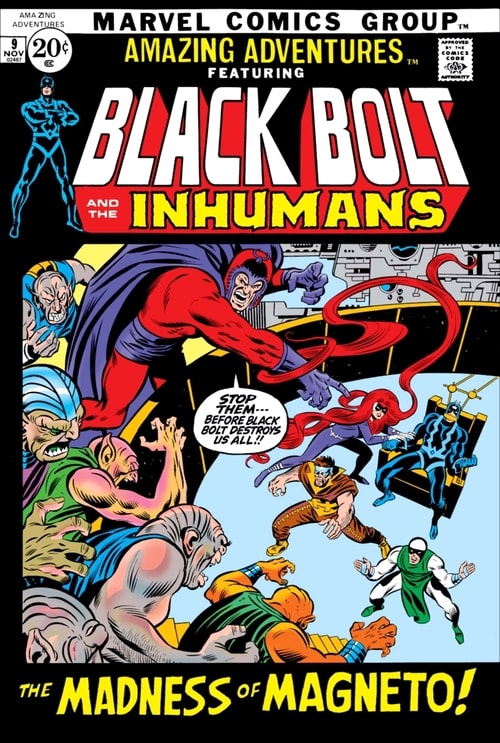
I’m not used to seeing Sekowsky’s art at Marvel; he was best known for his Silver Age co-creation of the Justice League and Adam Strange, as well work on Denny O’Neil’s depowered Wonder Woman. But I just found out that he was a Golden Age artist at Stan Lee’s Timely Comics. The X-Men don’t appear in this sequence, but Magneto is such a central X-Men villain that he’s worth keeping track of and his appearances will connect a few pieces of X-Men history here.
Incidentally, while I read these 1971 issues, I put on some music from 1971. If you’re interested here are some links to the youtube versions of America’s Horse with No Name, Grass Roots’ Temptation Eyes and George Harrison’s My Sweet Lord, all hits in 1971.
The other two issues I want to breeze through relatively quickly are 1973’s Avengers #110-111. The creatives are Steve Englehart, who feels like he wrote the majority of the X-Men’s purgatory adventures, and Don Heck, who drew a bunch X-Men in the Silver Age. In this pair of issues, Magneto lures the Avengers to the X-Men’s Westchester mansion to capture all of them at once and succeeds.
He’s got some weird mental manipulation going on because he moves microscopic bits of iron around people’s brains. This doesn’t check out in my baloney-meter and I’ve never heard of this power again, so it’s best to forget it. The X-Men do get significant page space, but since they’re all hypnotized, they’re not more meaningfully part of the story than Doombots. But Magneto’s defeat here will set up another Magneto Englehart story in my next blog post.
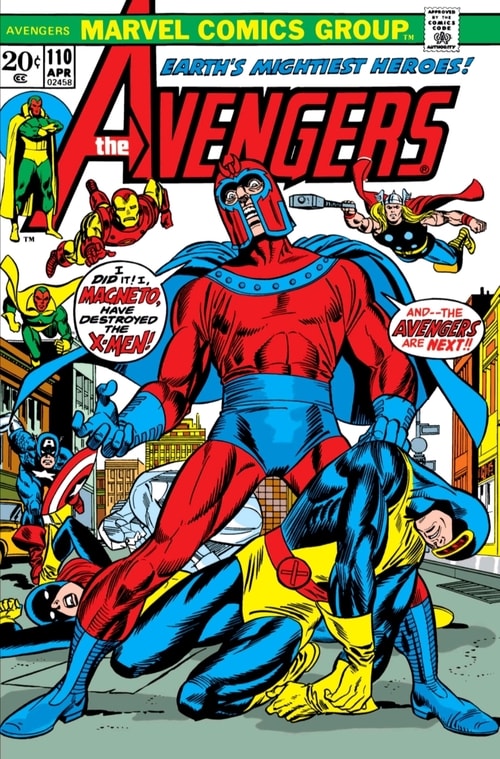
The real X-Men stories pick up in 1973’s Incredible Hulk #161, written by Steve Englehart, drawn by newlywed Herb Trimpe and inked by Sal Trapani. If you want the feel of 1973 while reading along, here’s Free’s Wishing Well, Sweet’s Blockbuster (check out the big-a$$ tiger on that gold lamé suit!), and Jim Croce’s Bad Bad Leroy Brown.
The Hulk has gotten lost and crossed the border into Canada. Senseless, random monster encounters. Hulk obviously rolled an 89 on the percentile dice for wandering monsters of the southern Canadian wilderness and got four RCMP officers in ceremonial red serge tunics, led by a level 3 sergeant with a moustache who addresses them as “men.”
Then the Hulk rolled poorly on a wisdom saving throw and is being life-drained long distance by the Mimic. In fact we’re all being life-drained by the Mimic – the whole planet. His drain power is out of control and has sucked the life right out of people. Vera (Mimic’s current squeeze) went to get Hank McCoy to help cure the Mimic. In the end, the Hulk barges in to fight his “attacker” and Mimic sucks out enough gamma radiation from the Hulk to weaken the Hulk and kill himself. Problem solved.
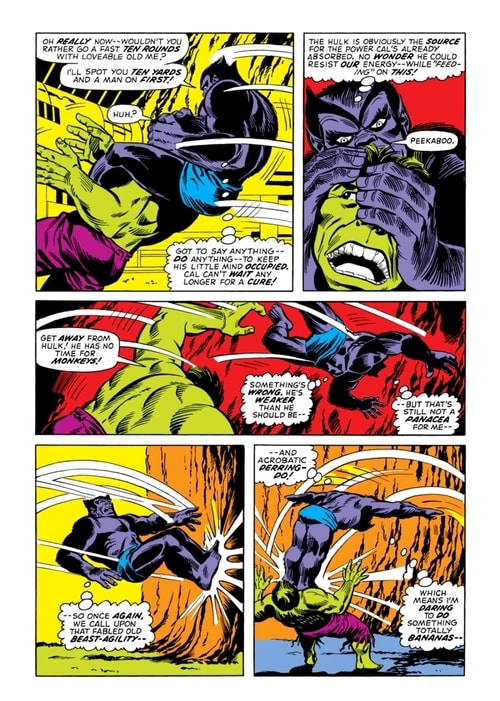
On a personal note, for a long time, I only knew of the Mimic through the Official Handbook to the Marvel Universe, Deceased and Inactive volumes, and knew that Cal Rankin had died here, but this was my first read of it. Another personal surprise for me was just how much stronger furry Beast is compared to big-words Beast, even taking into account a mildly-depowered Hulk. And in the continuing interest of being completist, a year later, the Hulk soon fought the Juggernaut and the X-Men made a brief cameo (reproduced in its entirety below). And a very important X-man will appear in the Hulk a year after that, and in my next blog post!
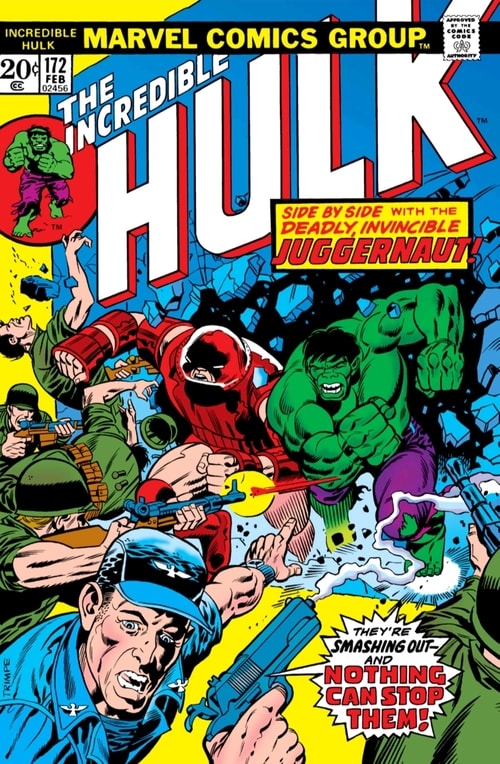
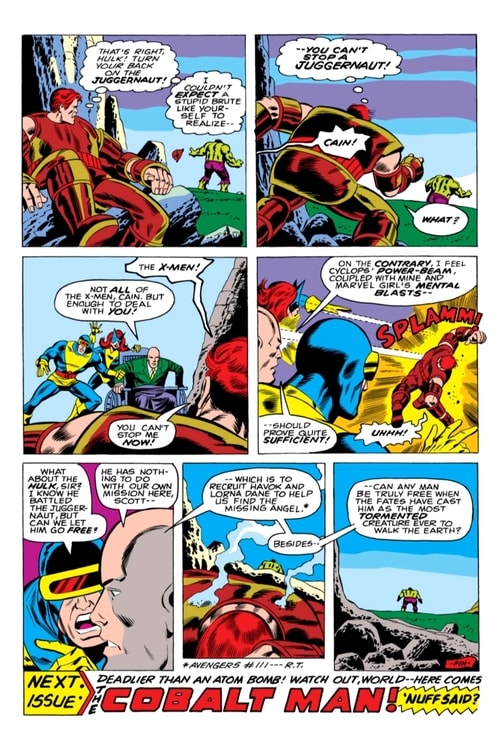
The X-Men finally made a substantive guest appearance in a 4-issue Captain America run starting with#172 by Steve Englehart and Sal Buscema. It was published in 1974, so if you want some mood music, here’s Stephen Stills’ Love the One You’re With, Ace’s How Long, and Jungle Boogie by Kool & the Jets.
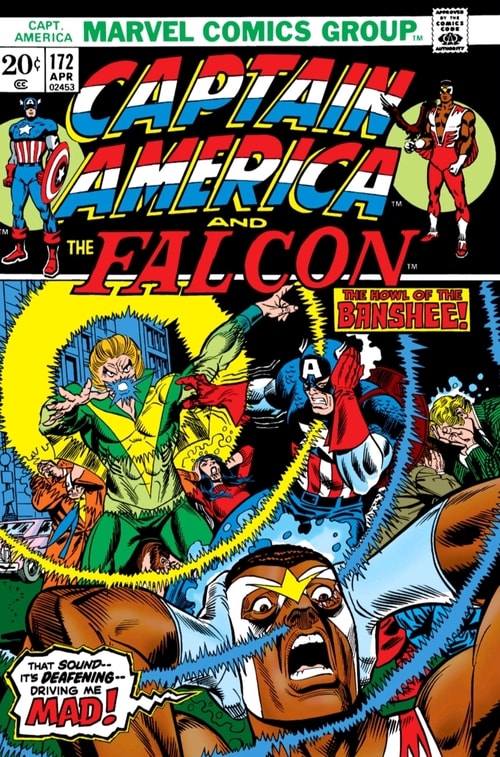
Half of this issue is a convoluted plot by super-villains to cast blame on Captain America and the Falcon, who are apparently outlaws in this period. After Cap and Sam get away, they follow a clue to Nashville and bump into the only hero I know who’s been actively been portrayed as a lover of Nashville music: Banshee! Claremont played with this a few times.
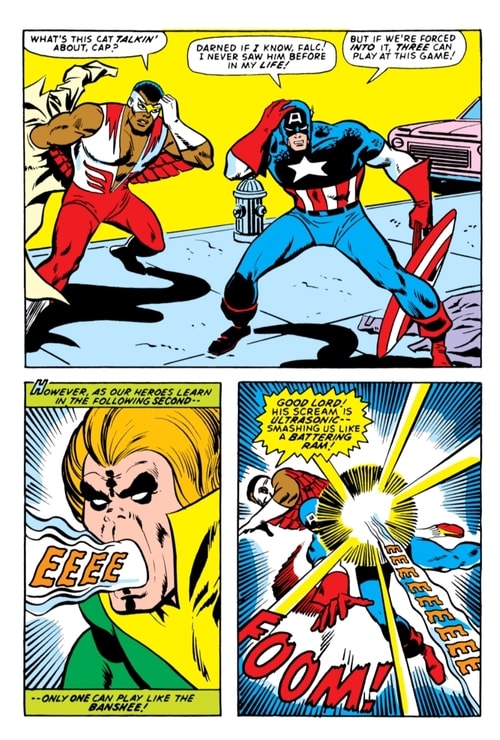
Because it’s Marvel, they misunderstand each other and fight. I’ve never been a fan of Sal Buscema’s draftmanship, but I really noticed in this issue how clear his moment-to-moment visual storytelling is, without needing a lot of real estate to do it. And just when it looks like Banshee is going to kick their butts, Cyclops, Marvel Girl and Professor X show up, hunted by the same people who have been causing problems for Cap and Sam. Weirdly, like the rest of their interregnum appearances, the X-Men are in their early blue and yellow uniform costumes, so continuity begone! Roy Thomas must have gotten no-prize seeking mail about this, because in one of the issues Englehart notes (without explaining) that the X-Men chose to switch to their junior uniforms.
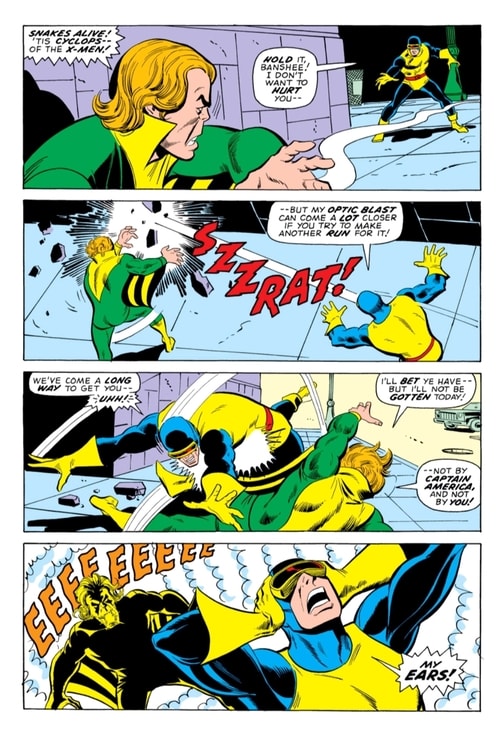
Since Cap is a fugitive, S.H.I.E.L.D. attacks everyone in Captain America #173. The X-Men and Cap and Falcon make quick work of them. Incidentally, Cyclops’ optic beam apparently becomes a heat ray in this issue. Given that this was all probably Marvel method, I would guess that Buscema wasn’t too familiar with the character and once it was drawn, Englehart and Thomas just had to run with it. We get a great recap of everything from the two Avengers issues, but in addition, we find out that Beast is missing, as is Angel and Havok and Lorna Dane (still not yet called Polaris).
We get a bit of info of the machinations behind the scenes because Englehart brings back the spy who had pretended to love Hank McCoy in the Amazing Adventures run. Cap and Falcon and Cyclops make a plan to fake her kidnapping (by Cyclops) and rescue (by Sam and Steve) to make her trust them. This works and an operative of the Secret Empire comes by later to recruit the pair.
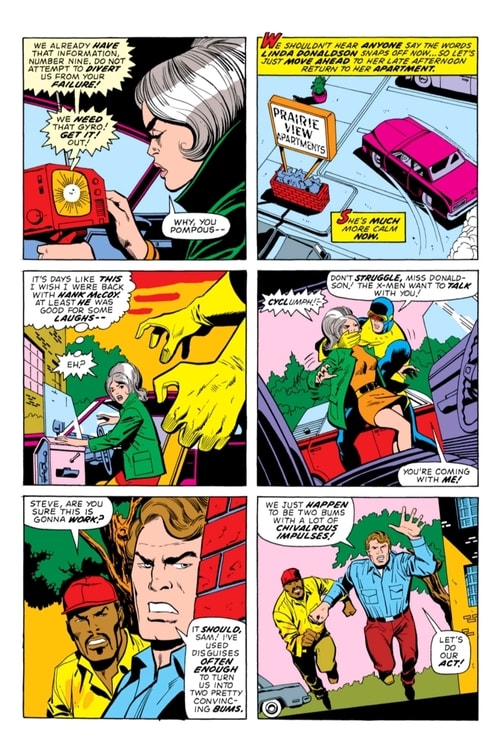
There is much superheroics in Captain America #174 and #175, as they find the captured mutants in the Secret Empire’s underground hidden base.
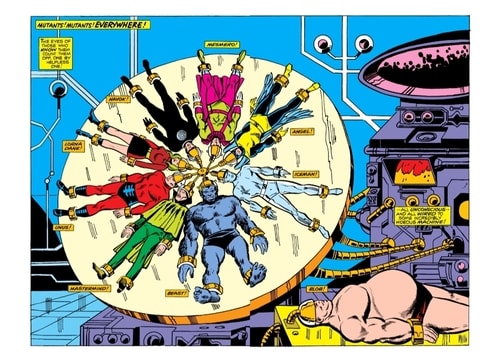
Incidentally, this run is also another one of those stories that puts paid to the alt-right fanboys who complain about politics getting into their comics. The plot of this arc is directly related to the United States’ post-Nixon psychological-political hangover with Moonstone as a kind of sleeper agent super-villain spy backed by the Secret Empire. He’s posing as a superhero as the head of a political group aiming to restore America’s greatness via a “heritage organization.” Oh hey, 1974! 2020 just called. They want their plot back. It’s a fun run and Englehart does a good job with the X-Men here.
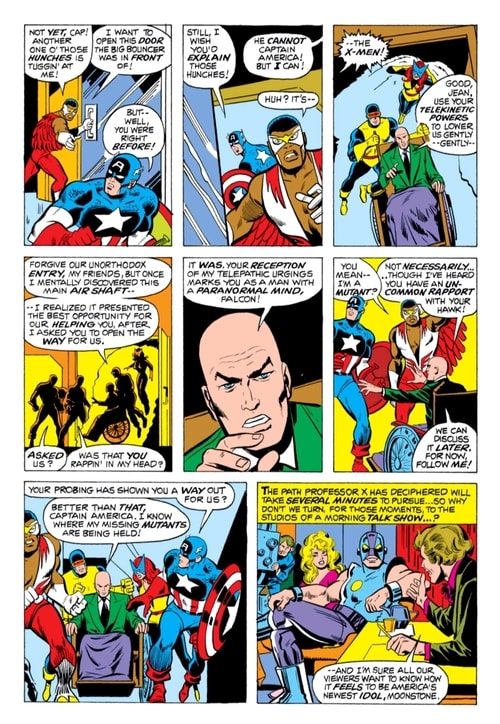
Marvel Team-Up #23 from 1974 is the last issue for this post. Len Wein and Gil Kane paired the Human Torch and Iceman, who were last together in Strange Tales #120 (see my #2 X-Men post below). Gil Kane’s art is great and brings us back to a period of the FF history when the Inhuman Medusa was one of the team. Human Torch isn’t with them though – he’s bored and looking for something to do and gets tangled up in meaningless conflict with Iceman and a silly villain called Equinox. I never cottoned to Marvel Team-Up nor Marvel Two-in-One (nor Brave and the Bold for that matter). I felt that these team-up stories were episodic and someone distant from the real conflicts and plots of the people teaming up. It was also a dumping ground to conclude stories that had been cancelled in mainline issues (ex.: Warlock died in a Marvel Two-in-One annual because his own series had been cancelled). This issue didn’t change my assessment.
Thanks for sticking with me so far. I think that the next post might be the last one of the X-Men purgatory and the very end of the old X-Men. I hope you’ll be back in two weeks!
If you want to catch up on any of my other posts about the X-Men, they’re below:
- Part I: Introducing The Strangest Super-Team of All: Uncanny X-Men #1 (Nov 1963) to #20 (May 1966)
- Part II: Early Guest Appearances (1964-65), Uncanny X-Men #21-23 (1966), and X-Men: First Class Volume I (2006)
- Part III: X-Men: First Class, Volume II (2007) and First Class Finals
- Part IV: Uncanny X-Men #24-39: The Middle Years of the Original Team
- Part V: Uncanny X-Men #40-48: Death and Separation
- Part VI: Uncanny X-Men #49-53: Reunion and Family and Steranko
- Part VII: Uncanny X-Men #54-58 — Havok and Neal Adams
- Part VIII: Uncanny X-Men #59-66: The Savage Land and the End of the Silver Age X-Men
- Part IX: Filling in the Corners of the Original X-Men with Savage Hulk #1-4
- Part X: John Byrne’s The Hidden Years #1-4
- Part XI: Storm, the FF and Phoenix in John Byrne’s The Hidden Years
- Part XII: X-Men Guest Appearances in 1971-1972 and Hank gets Furry!
- Part XIII: Englehart’s Bronze Age Monster Horror – The Beast
- Part XIV: 1973 and 1974 – Magneto, the Hulk, Banshee and post-Watergate Captain America
- Part XV: 1974 and 1975 – The Last Tales of the Original X-Men
- Part XVI: Enter Wein, Claremont and Cockrum in 1975
- Part XVII: 1976 — Sentinels in Space and the Rise of Phoenix
- Part XVIII: Juggernaut and Magneto — For the Very First Time
- Part XIX: Phoenix, Firelord and the Imperial Guard
- Part XX: Iron Fist, Blame Canada and Some Strike-Outs
- Part XXI: Epic Magneto Triumph and more X-Men Death!
- Part XXII: 1978 — The Savage Land, Japan and Psionic Throwback Thursday!
- Part XXIII: 1979 — Chaos in Canada with Alpha Flight!
- Part XXIV: Arcade, Murderworld and their First King-Sized Annual
Derek Künsken writes science fiction in Gatineau, Québec. His first novel, The Quantum Magician, a space opera heist, was a finalist for the Locus, Aurora and Chinese Nebula awards. Its sequel, The Quantum Garden is on sale now. His third novel, The House of Styx, got a starred review in Publishers’ Weekly and is finishing its run in Analog Science Fiction and Fact right now. Solaris Books will be releasing the audio and ebook editions in August, 2020 (pre-order link), and the hardcover release in April, 2021. He also has a novella in the Jul/Aug, 2020 issue of Asimov’s Science Fiction called “Tool Use by the Humans of Danzhai County.”
